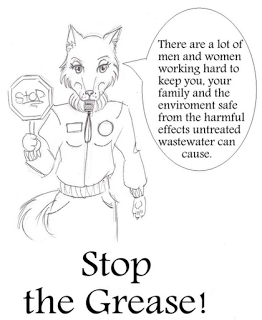Trapzilla, A Thermaco Technology, making a difference in worldwide effort to deliver clean water
- Jul 5, 2013
 ASHEBORO, N.C. — Water runs from our taps, and we store it in bottles, coolers and refrigerators.
ASHEBORO, N.C. — Water runs from our taps, and we store it in bottles, coolers and refrigerators.Free shipping on online orders over $1400 (contiguous US only).
 ASHEBORO, N.C. — Water runs from our taps, and we store it in bottles, coolers and refrigerators.
ASHEBORO, N.C. — Water runs from our taps, and we store it in bottles, coolers and refrigerators. When Michelle Aumiller was a kid growing up in Oklahoma, she loved jumping in mud puddles.
When Michelle Aumiller was a kid growing up in Oklahoma, she loved jumping in mud puddles.
Today, though, in her role as a municipal Industrial Waste Monitor, she knows that sanitary sewer overflows can turn a child’s mud puddle into a serious health hazard.
“By protecting our sewer lines and waste treatment plants from FOG (fats, oil and grease) and other contaminants,” Aumiller says, “we keep waste water from contaminating the environment and mud puddles – for our children and grandchildren.”
Six years ago, when Aumiller took on the position of Industrial Waste Monitor for Midwest City, Oklahoma, the municipality was experiencing serious problems with Sanitary Sewer Overflows (SSO).
“The city was under a Consent Order by the state Department of Environmental Quality and was facing large fines for the overflows,” according to Aumiller. “The first thing I did was write a letter that the sewer line crew distributed to homes, restaurants and businesses -- explaining the problem that we were having with FOG and other clogging materials and providing information on best practices to help solve the problem.”
 © 2020 Thermaco Inc. All Rights Reserved / Privacy Policy
© 2020 Thermaco Inc. All Rights Reserved / Privacy Policy